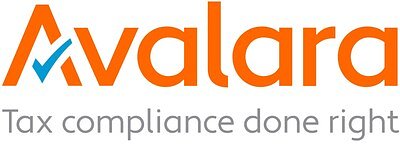
Beyond Spreadsheets: How Firms Are Scaling Property Tax Compliance with Automation
As property tax complexity rises, firms are turning to automation to handle growing client portfolios and unlock data-driven insights. This article explores how tech is transforming the industry.
Beyond Spreadsheets: How Firms Are Scaling Property Tax Compliance with Automation
By Sam Lidman
For decades, property tax compliance relied on a familiar, yet increasingly unsustainable, system: legions of accountants poring over spreadsheets and PDFs. But as businesses expand, property portfolios grow in complexity, and regulatory landscapes shift, that system is buckling under the strain. Now, a new wave of automated solutions is promising to reshape the industry, enabling firms to scale their services, reduce errors, and unlock valuable data insights.
Cost Containment Advisors (CCA), a tax advisory firm specializing in fixed-asset intensive industries, is one such firm embracing this transformation. Faced with onboarding two new clients with over 300 locations across 23 states, CCA recognized the limitations of its manual processes. “We reached a point where spreadsheets just weren’t cutting it,” explains a senior director at the firm. “The risk of errors and the time commitment were becoming unsustainable. We needed a solution that could scale with our growing client base.”
CCA’s solution? Adopting Avalara Property Tax for Accountants, a platform designed to automate property tax compliance. The firm isn’t alone. Across the industry, businesses are recognizing the need to move beyond manual processes and embrace automation. The drivers are multifaceted, ranging from increasing regulatory complexity and the growing demand for data transparency to the simple need to do more with existing resources.
The Rising Tide of Complexity
Property tax compliance is notoriously complex, varying significantly by jurisdiction and asset type. Keeping up with changing regulations, assessment rules, and exemption requirements is a constant challenge. This complexity is only exacerbated for companies with geographically dispersed assets. “The sheer volume of data and the number of jurisdictions involved can be overwhelming,” says a tax director at a large manufacturing company. “It’s easy for errors to slip through the cracks, leading to costly penalties and missed opportunities.”
Automation tools like Avalara’s address this complexity by centralizing data, automating calculations, and providing real-time updates on regulatory changes. Optical Character Recognition (OCR) technology dramatically reduces manual data entry by automatically extracting information from property tax documents. This not only saves time and reduces errors but also frees up accountants to focus on higher-value tasks like strategic planning and client advisory services.
Scaling for Growth
The benefits of automation extend beyond error reduction and time savings. For accounting firms like CCA, it’s about enabling growth and expanding service offerings. “We were at risk of losing clients if we couldn’t offer a full-service property tax solution,” admits a senior director at CCA. “Avalara allowed us to confidently onboard new clients and scale our operations without sacrificing quality.”
This scalability is particularly crucial in today’s competitive landscape. Accounting firms are increasingly expected to offer a comprehensive suite of services, going beyond basic tax compliance to provide strategic advisory support. Automation allows firms to handle a larger volume of clients without adding significant headcount, improving profitability and enhancing their competitive position.
Beyond Compliance: Unlocking Data-Driven Insights
While automation initially addresses the pain points of compliance, it also unlocks a wealth of data that can be used to improve tax efficiency and reduce risk. Platforms like Avalara’s are moving beyond simple data entry to provide analytics and reporting capabilities, giving clients greater visibility into their property tax liabilities.
“We're now able to identify potential overpayments and appeal opportunities that we would have missed with our previous manual processes,” says a tax director at a national retail chain. “This is not just about saving money; it’s about optimizing our property tax strategy and ensuring we’re paying the correct amount.”
One key feature gaining traction is the ability to track property tax assessments over time, identify trends, and benchmark performance against similar properties. This data-driven approach allows companies to proactively manage their tax liabilities and minimize their overall tax burden. Furthermore, automated dashboards provide real-time visibility into key metrics, enabling informed decision-making and proactive risk management.
The Future of Property Tax Compliance
The transition to automated property tax compliance is not without its challenges. Data integration, system implementation, and user training all require careful planning and execution. However, the long-term benefits far outweigh the initial investment.
As the regulatory landscape continues to evolve and property tax complexity increases, automation will become increasingly essential for businesses and accounting firms alike. The future of property tax compliance is not about replacing accountants with technology, but about empowering them with the tools they need to work more efficiently, deliver greater value to their clients, and stay ahead of the curve. The days of poring over spreadsheets are numbered, and a new era of data-driven, automated property tax compliance is dawning.
This shift represents more than just a technological upgrade; it's a fundamental reimagining of how property tax compliance is managed, paving the way for increased efficiency, reduced risk, and a more strategic approach to tax planning.
